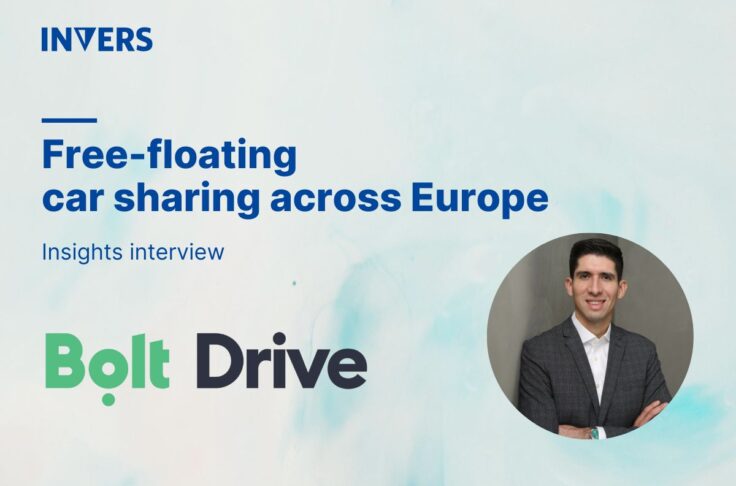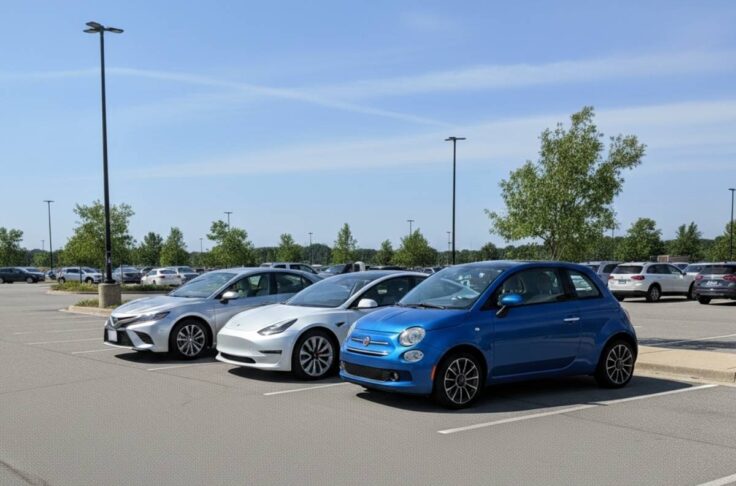Webinar Recap: Enhancing Car Sharing Operations Through Technology
Summary
In this webinar, Clemens Schönberger, Director of Field Operations at Free2Move and Niraj Patel, Senior Director of Consumer Rentals at Uber shared insights on implementing technology solutions for two critical car sharing challenges: AI-based damage detection and fleet rebalancing through strategic partnerships. Free2Move demonstrated how they addressed vehicle damage costs, which typically range from 10-20% of revenues, while Uber discussed how they leveraged their extensive network of gig drivers to optimize vehicle distribution and accessibility. Let’s learn how Free2Move and Uber enhanced car sharing operation through technology.
Unless you have perfect customers who drop off vehicles exactly where needed and report damages diligently, you know the challenges of running a free-floating car sharing operation. Undetected damages and fleet rebalancing issues hurt efficiency, impact revenues, and are a constant source of headaches for operators.
In our recent webinar, Free2Move and Uber shared how technology and strategic partnerships can turn these operational hurdles into opportunities.
Table of Contents
The Challenges of Damage Detection
Vehicle damages are costly for car sharing operators, often consuming 10-20% of revenues.

To address this, Free2move explored two alternative technologies before adopting INVER and carvaloo’s AI-based damage detection solution.
Photo-Based Scanning
Relied on users or staff to take before-and-after photos of vehicles.
Challenges:
- Poor photo quality and inconsistencies.
- Dependence on manual processes.
- Lack of real-time capabilities.
Fixed Scanning Arches
Provided comprehensive scans via stationary infrastructure.
Challenges:
- Required permanent installations.
- Incompatible with free-floating operations.
- High infrastructure costs.
Neither solution met Free2Move’s need for a transparent, automated solution that can improve their traceability of damages and allow them to properly document damages across a mobile fleet.
AI-Based Solution Implementation
Free2Move ultimately chose AI-based Damage Detection by Carvaloo and INVERS. They ran a pilot on 100 vehicles—20% of their fleet—in key European and U.S. markets. The extensive data gathered over three months was eye-opening, as Clemens shared.
A standout example came from Madrid, where the system detected severe undercarriage damage caused by a vehicle driving down a flight of stairs—damage initially missed during a visual inspection, a big repair that otherwise would have gone unnoticed and become a safety issue.

By the end of the pilot, they expanded the Damage Detection Module to 90% of their fleet in key markets, ensuring a more streamlined and efficient damage management process.
During the webinar, an audience member shared an insight that approximately 70% of damages are related to vandalism. Clemens confirmed experiencing a similar trend, noting that 50-60% of damages occur while vehicles are parked, often involving theft attempts, vandalism, and hit-and-runs.
Thanks to the AI-based damage detection technology, Free2Move also discovered that 10-15% of customers fail to report damages—whether to avoid the hassle of filing a claim or simply to evade responsibility. The damage detection technology has been instrumental in identifying unreported incidents, allowing Free2Move to recover costs that would otherwise have been lost.
Educating the Customer through Transparency
As Clemens explained, disclosing the technology is not just informing. It’s also a chance to educate customers.

Simply knowing the technology exists can lead customers to drive more carefully and treat assets with greater respect. This awareness acts as a subtle nudge, fostering better driving behavior and reducing the likelihood of incidents.
Fleet Rebalancing Through Partnerships
Fleet rebalancing is essential for ensuring vehicles are available when and where users need them. As Clemens said, the challenge is simple: “There’s a need to move cars from A to B with the goal of having the right car at the right place at the right time. And for that, rebalancing is needed.”
Poll Insight: During the webinar, a poll revealed how operators currently approach fleet rebalancing:

Unlike traditional car rental, where rebalancing involves predictable flows (e.g., airport to downtown), free-floating car sharing requires dynamic and flexible solutions. Free2Move tackled this challenge through a partnership with Uber, leveraging Uber’s extensive gig-worker network to optimize vehicle distribution.
Uber’s Approach to Fleet Movement
Uber’s model uses gig workers to move vehicles, creating new earning opportunities while enhancing operational flexibility. Uber initially piloted this within its ecosystem, delivering cars to Uber users. However, sustaining the service required a higher volume of vehicle moves to balance the marketplace and maintain operational efficiency.
Niraj also explained, timing and flexibility play a critical role in the success of rebalancing efforts. The tighter the timeframe for vehicle relocation, the more complex the task. For instance, deliveries with a broad time window (eg. by the end of the day) are easier to manage and schedule compared to immediate or on-demand requests.
However, as the pool of gig workers grows, Uber aims to move towards on-demand services with vehicle relocations happening in near real-time, within 5-10 minutes. Niraj is confident that higher vehicle movement volumes will allow Uber to refine and expand the service, making it increasingly efficient and responsive.
Uber’s Transparency
A significant factor contributing to the success of this partnership is Uber’s transparency. Free2Move benefits from clear communication and visibility into the rebalancing process, making managing and coordinating vehicle movements easier.

More from the webinar
The webinar highlighted how innovative solutions, like AI-based damage detection and innovative partnerships, are transforming traditional operational challenges into opportunities. Free2move’s and Uber’s experiences offer valuable lessons for operators looking to enhance their car sharing operations through technological innovation.
Did you miss the live session? Watch the full webinar recording here to revisit the discussion.
For more information on AI-based damage detection and other fleet management solutions, visit the INVERS blog for additional resources, such as our User Insights on AI-Powered Vehicle Damage Detection webinar with MyWheels and carvaloo. In that webinar, MyWheels and carvaloo shared invaluable results and lessons learned from implementing AI-powered damage detection in a carsharing fleet. If you are are interested in the technology behind AI-based Damage Detection, our Tech Talk: AI-Powered Vehicle Damage Detection is a must-watch!
Want to be notified about future webinars on trends, fleet management, and carsharing in North America? Sign up for our news updates!


